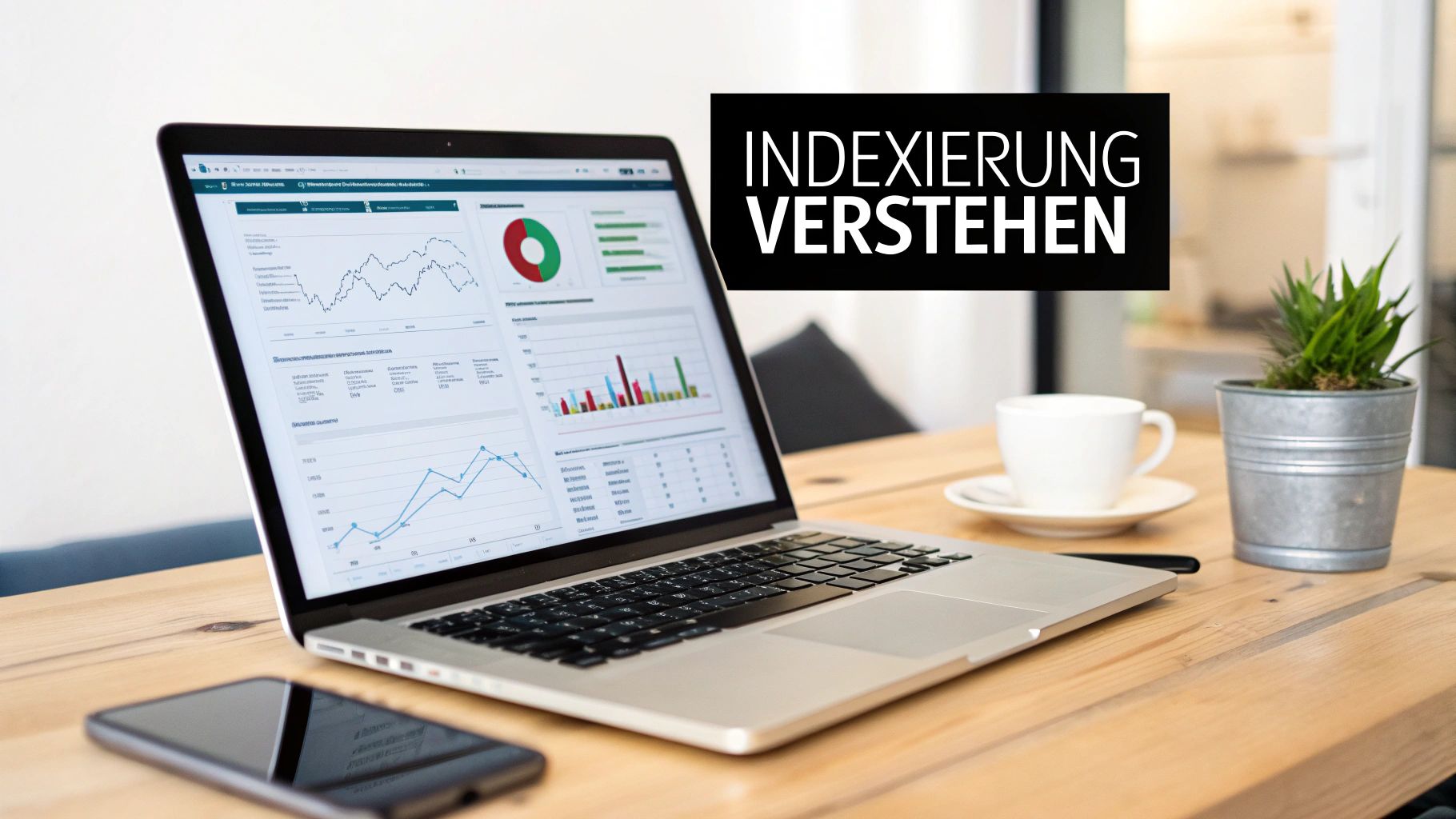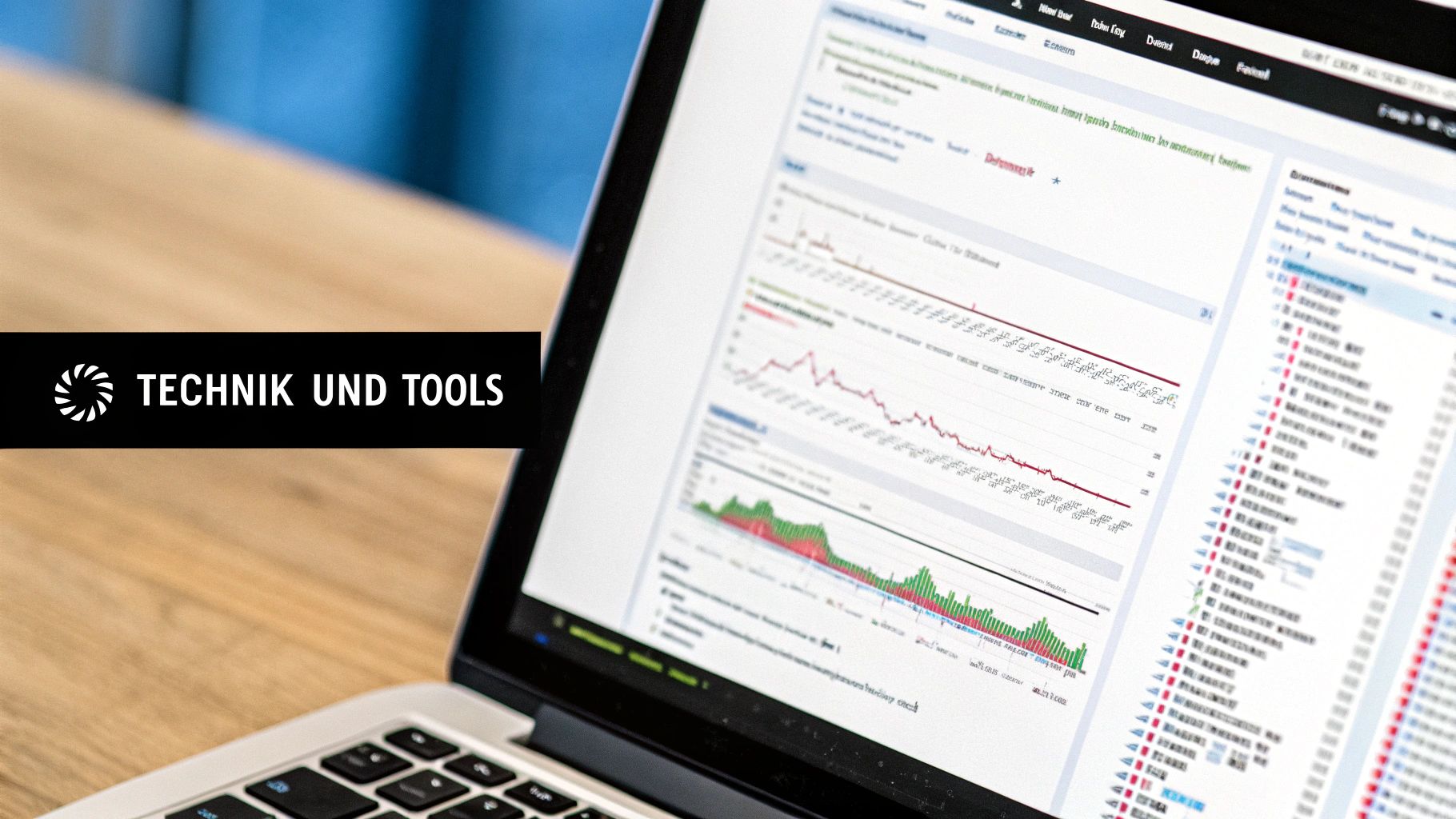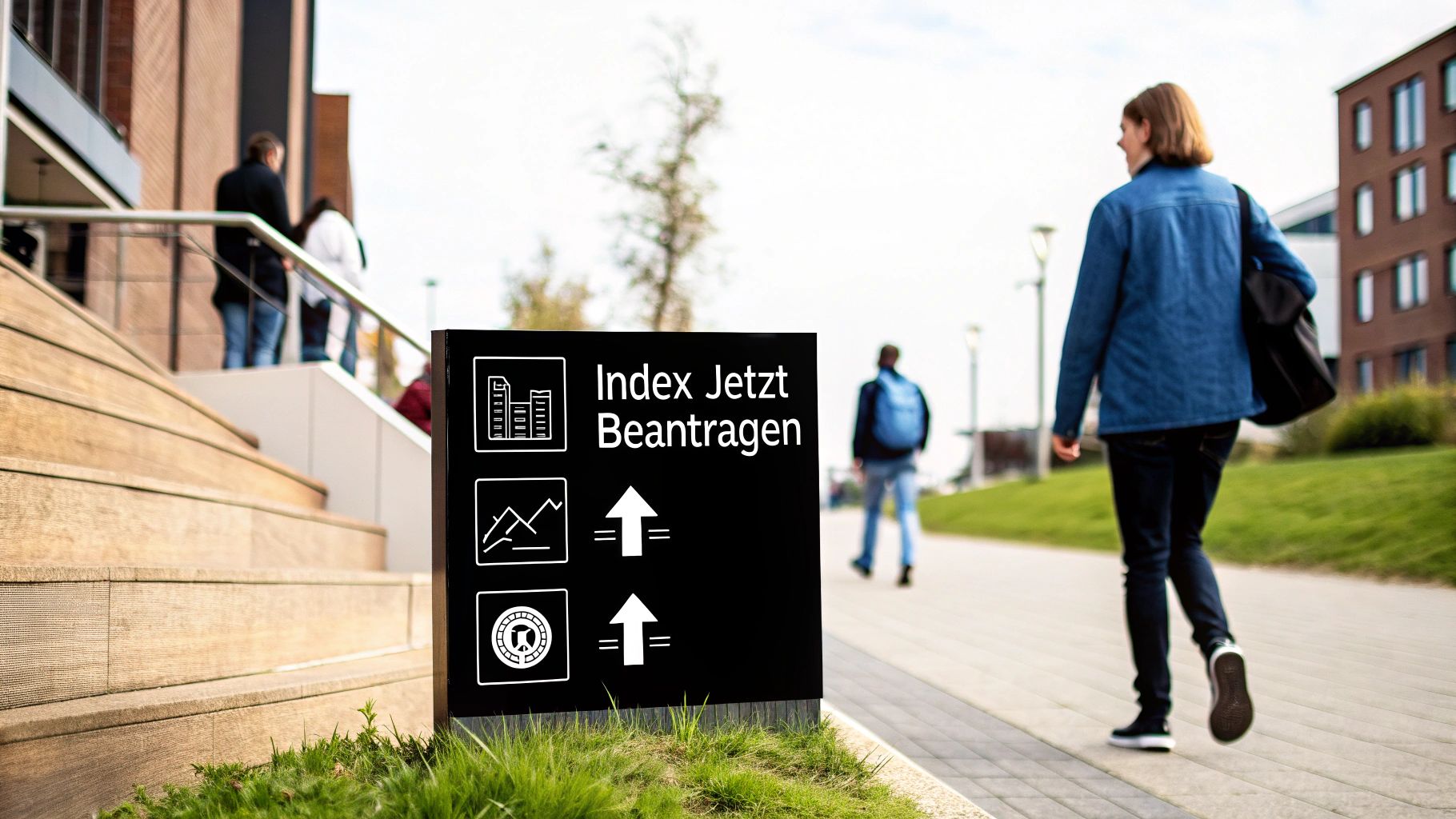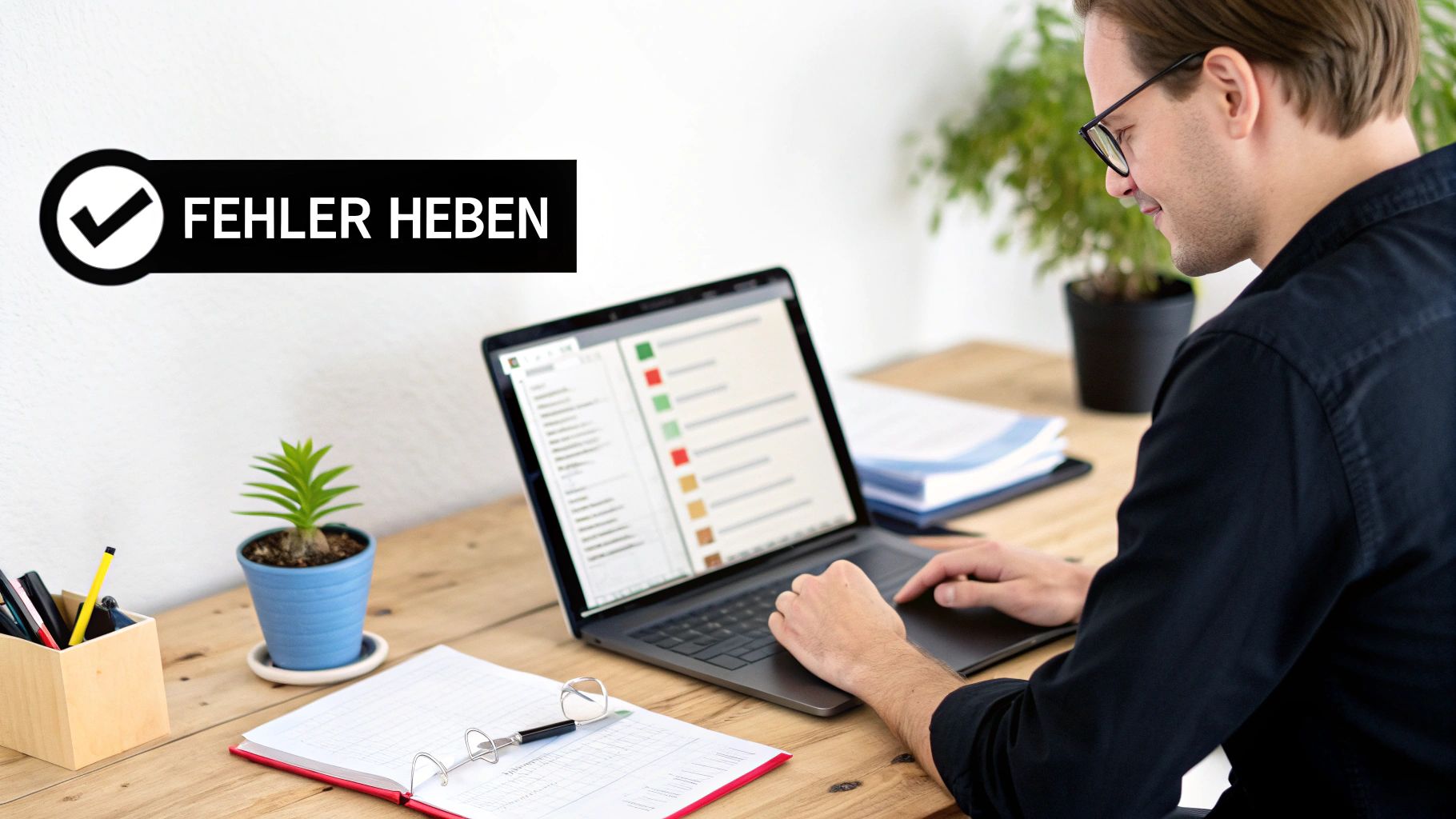Understanding the basics of Google indexing

Indexing by Google is essential for the success of your website. It's comparable to a library catalog: Without a well-structured catalog, no one will find the book they're looking for, no matter how interesting the content. The same applies to your website: Without indexing, it's practically invisible to users via Google search. The process begins with the Crawling.
Crawling vs. Indexing: The Difference
The Googlebot, Google's automated web crawler, constantly searches the internet for new content. This process is called crawling. The bot follows links on websites, similar to a visitor clicking from page to page. It's important to note that crawling alone does not guarantee indexing. Indexing is the subsequent step in which Google processes the collected information and incorporates it into its search index.
Indexing can be compared to adding a book to the library catalog. Only after this step does the book become discoverable in the library. The same applies to your website: Only after it's been indexed will it appear in Google search results. It's therefore important to understand the difference between crawling and indexing.
The importance of indexing
The indexing of your website by Google is crucial for your online visibility. In Germany, Google has a market share of over 95% in the area of search engines. More detailed statistics can be found here. This means that most internet users use Google to find information. Therefore, it is essential that your website is correctly indexed in Google so that potential customers can find you. Indexing is usually automatic, but in some cases, a manual request may be required.
In addition to automatic indexing, there are ways to speed up the process. One proven method is submitting a sitemap. Here's an example sitemap. A well-structured sitemap helps Googlebot crawl your website efficiently and index the relevant pages. You can find more information on sitemaps here.
Factors for successful indexing
Google considers various factors to decide which pages to index. High-quality content, one clear page structure and a positive user experience are of great importance here. Technical aspects, such as the Loading speed and the Mobile-friendliness Your website's content plays a crucial role. If these important elements are missing, your website may not rank well in search results, despite potentially valuable content. Optimizing these factors increases the likelihood of successful indexing and improves your search ranking.
Apply for Google Indexing: The Practical Guide

Now that we've covered the basics of indexing, it's time to get down to business. This guide will guide you step by step through the process of requesting indexing from Google. From setting up Google Search Console to successful indexing – you'll find all the important information here.
The Google Search Console: Your tool
The first step takes you to Google Search ConsoleThis free platform from Google offers you comprehensive insights into your website's performance in Google search. It forms the interface between your website and Google.
Here, you can not only request indexing but also view important data, including crawl errors, keywords, and the overall visibility of your site.
URL Checker: Quickly Index
With the URL checker in Search Console, you can quickly request the indexing of individual pages. Simply enter the URL of the desired page. Search Console will then show you whether it is already indexed.
If the page is not yet indexed, use the function “Request indexing”This method is particularly suitable for new or updated pages.
Submit sitemap: For the entire website
For full indexing of your website, we recommend submitting a SitemapA sitemap is a file that lists all the important URLs on your website. This gives Google an overview of your website structure.
The sitemap makes it easier for Googlebot to crawl and index your pages. You might be interested in: [Our Page Sitemap]. You can submit your sitemap directly to Google Search Console.
Advanced techniques
For complex websites with many subpages, advanced techniques are helpful. An optimized internal linking ensures that all important pages are accessible to Googlebot.
Also Schema Markup can improve indexing. It makes your page content more understandable for Google.
Case studies and common mistakes
The optimal strategy for applying for indexing depends on the website type. An online store requires a different approach than a blog.
Common mistakes include blocking important pages by the robots.txt-file. Also noindex tags on pages that are to be indexed are problematic.
Google Search Console offers valuable tools for monitoring indexing and visibility. Verified owners can view metrics such as clicks, impressions, and average position directly in search results. Find more detailed statistics here.
This data helps you evaluate the effectiveness of your SEO efforts. This allows you to make adjustments where necessary to optimize visibility in search results. By analyzing this data and avoiding common mistakes, you can improve your website's indexing and visibility.
Identify and resolve indexing problems

Even if you request Google indexing, individual pages or even your entire website may not be indexed. This can have various causes. In this section, we'll examine common indexing issues and show you how to fix them.
The robots.txt file: friend or foe?
The robots.txt file gives the Googlebot Instructions on which areas of your website are allowed to be crawled. A common mistake is accidentally blocking important pages or the entire website from Googlebot.
Check your robots.txt file carefully. Make sure no important pages are blocked. An example of a faulty robots.txt file: User-agent: * Disallow: /.
This entry would completely exclude Googlebot from your website, making your website invisible to Google.
Noindex directives: invisibility on command
Noindex directives in your website's code tell Google that a particular page should not be indexed. These directives can be found in <head>-area of your website using meta tags.
Check the source code of the affected pages for such directives. If you accidentally include them, remove them immediately. This will make the page eligible for indexing again.
Login barriers: Googlebot can't get in
Websites or areas that are protected by a Login barrier Protected content cannot be crawled by Googlebot. Consequently, this content will not be indexed.
If you want this content to be indexed, you'll need to remove the login barrier. Alternatively, you could set up special Google credentials. However, this should be approached with caution and only considered in exceptional cases.
Systematic troubleshooting with a framework
A Troubleshooting framework helps with the systematic resolution of indexing problems. It provides a structured approach for identifying and resolving the issues.
The following table shows common indexing problems and solutions:
"This table shows the most common Google indexing problems and offers practical solutions for each case."
| problem | Possible cause | Solution |
|---|---|---|
| Page not indexed | Blocked by robots.txt | Adjust robots.txt |
| Page not indexed | Noindex directive | Remove noindex directive |
| Page not indexed | Login barrier | Remove login barrier or grant Google access |
| Slow indexing | Slow website loading times | Optimize website performance |
| Problems with the sitemap | Incorrect sitemap | Correct sitemap and resubmit |
The table shows that the most common problems arise from incorrect robots.txt configurations, noindex directives, or login barriers. Correcting these issues can resolve most indexing issues.
By systematically analyzing and solving these problems, you can Improve indexing of your website and increase your visibility in search results. Google typically performs indexing automatically. By following the above points, you increase the chances of your pages being indexed quickly.
Mobile-First: The key to successful indexing

The Mobile-friendliness Your website is crucial for Google's indexing. More and more users are accessing the Internet via smartphones and tablets. Therefore, it is important that your website is optimized for these devices. Google has expanded its indexing to Mobile-First This means the mobile version of your website is the primary version for indexing.
Why mobile-first is so important
The transition to mobile-first has far-reaching consequences for website operators. A poorly optimized mobile site can result in your website not being indexed or only poorly indexed. This means less visibility and reach in Google search results.
The User experience on mobile devices is crucial. Google wants to provide its users with the best possible results. Therefore, the search engine prefers mobile-friendly websites. A positive mobile user experience is therefore not only important for your visitors, but also for your Google ranking.
An important aspect is the mobile optimization of websites. July 5, 2024 Google will only display mobile-friendly websites in its search results. Non-optimized pages will therefore disappear from the search results. In Germany, over 85% of website visitors use mobile devices. Therefore, a responsive website design is essential to ensure an optimal user experience and remain visible in the Google index. You can find out more about this topic here.
Factors for mobile optimization
Google considers various factors when evaluating the mobile friendliness of a website. These include the Loading speed, the Readability of the text and the Usability the navigation.
- Loading speed: Fast loading times are essential. Users expect websites to load quickly, especially on mobile devices with often slower internet connections.
- Readability: The text should be easy to read without requiring the user to zoom in. A sufficiently large font size and good contrast are important.
- Usability: Navigation should be simple and intuitive, even on smaller screens. Large buttons and a clear structure help with this.
Tools for checking mobile friendliness
Google offers various tools to check mobile friendliness. Mobile-Friendly Test Google analyzes your website and gives you tips for optimization. Google Search Console provides insights into your website's mobile performance.
These tools help you identify and fix vulnerabilities, ensuring your website meets Google's requirements and is optimally indexed for mobile devices.
Before and after examples
Before-and-after examples illustrate the impact of mobile optimization. Improved loading times and optimized navigation lead to a better user experience and a higher indexing rate.
Even small adjustments can have a big impact. Optimizing images and adjusting font sizes can significantly improve mobile friendliness. Investing in mobile optimization is therefore definitely worthwhile. At LinkITUp, we're happy to help you optimize your website. mobile-friendly to design and your Maximize indexing opportunities.
Effectively monitor indexing progress
Applying for indexing at Google is just the first step. Continuously monitoring your website's indexing progress is crucial to its long-term success. Just as a captain continually checks his course using charts and a compass, you too must keep an eye on your indexing progress. Only then can you react to changes in a timely manner and adapt your strategy.
The Search Console: Your tool for monitoring success
The Google Search Console is the central tool for monitoring your website's indexing progress. It provides valuable data and metrics that give you insights into Googlebot's behavior on your website. Like the cockpit of an airplane, you'll find all the important indicators and tools here that show you the status of your "flight" in the search results.
Analyze crawling budget: Optimize efficiency
The Crawling budget Indicates how frequently Googlebot visits your website. A high crawl budget is important because it increases the likelihood that new content will be indexed quickly. The crawl statistics in Google Search Console provide detailed insights. Learn more about Google Search Console crawling statistics. They provide information about the Number of requests, response codes and type of crawled filesThis information can help you identify indexing issues and improve crawling efficiency. For example, a low crawl budget may indicate technical issues.
Fix indexing problems quickly
Search Console helps you identify indexing issues early on. Error messages and warnings indicate potential difficulties. By regularly checking Search Console, you can identify and resolve these issues before they negatively impact your visibility.
Reporting templates: Prepare data in an understandable way
With Reporting templates You can clearly display the indexing progress and summarize the most important key figures. This way you can keep track of the Number of indexed pages and that Crawling budget. Transparently document the progress of your SEO efforts. Check out our guide on Local Sitemaps. These reports are not only useful for your own analysis but also facilitate communication with stakeholders.
Understanding the Connections: Indexing and Performance
Successful SEO teams always consider indexing data in conjunction with other performance metrics, such as organic traffic and the Keyword rankingsThis holistic perspective helps you understand the relationships between indexing, visibility, and the success of your website. data-based decisions and continuously optimize your SEO strategy. By combining various data sources, you gain a comprehensive picture of your online performance and can align your measures with your business goals.
Turbo for indexing: Advanced strategies
Now that we've covered the basics of website indexing, let's move on to more advanced strategies. These go beyond simply submitting an indexing request and help you improve the speed and quality of indexing.
Optimize link architecture: Pave the crawling path
A well-structured Link architecture is essential for the efficient indexing of your website. Imagine your website like a city map: well-developed roads (links) allow Googlebot to reach each destination (page) quickly. A clear hierarchical structure with topic-relevant internal links helps Google understand your content. This optimally directs the crawling flow to the most important pages. Avoid "dead ends"—pages without internal links—as these may not be found by Googlebot.
A well-thought-out link architecture ensures improved Crawling efficiency and helps ensure that all relevant pages of your website are indexed.
Use internal linking strategically
Internal links are not only important for navigation, but also influence indexing. Strategically placed internal links increase Indexing probability new content. Link new pages from already indexed, strong pages. Use a meaningful anchor textthat accurately describes the topic of the linked page. This provides Google with additional information and simplifies indexing.
Remember that internal links act as signposts for Googlebot, helping it understand the structure and content of your website.
Social signals and content distribution
The distribution of your content via social networks can accelerate the indexing of new pages. Generate shared content social signals, which Google considers an indicator of relevance and timeliness. This allows Googlebot to discover and index new pages more quickly. A broad Content distribution increases visibility and thus the likelihood that Google will find your pages.
However, keep in mind that social signals have only a limited impact on indexing. Focus primarily on technical optimizations and a strong link architecture.
Technical optimizations for efficient crawling
In addition to link architecture and content distribution, technical factors are important. fast loading time is crucial because Googlebot has a limited crawling budget. The faster your pages load, the more it can crawl. Make sure you have a clean code base and a optimized website structureGoogle is responsible for the majority of website traffic – for example 63,41%. You can find more search engine statistics here. Correct indexing is therefore crucial for the visibility and traffic of your website.
A technically optimized website makes it easier for Googlebot to crawl and index your pages, which ultimately leads to better visibility in search results.
In order to weight and prioritize the different factors, a Priority framework be helpful:
The following table illustrates which factors can influence indexing speed:
Influence of various factors on indexing speed:
This table shows which factors can have a positive or negative impact on the speed of Google indexing.
| factor | Influence | priority |
|---|---|---|
| Loading time | High | High |
| Mobile optimization | High | High |
| Link architecture | High | Medium |
| Internal linking | Medium | High |
| Social signals | Low | Low |
| Content Distribution | Low | Medium |
This table provides an overview of the most important factors and their weighting. Adjust the priorities to your individual needs. A combination of technical optimizations, strategic link management, and content distribution is the key to successful indexing.
Setting priorities: The right framework
The optimal strategy depends on your website. Priority framework helps identify the most important measures. Do you want to optimize your indexing and increase your online visibility? LinkITUp, the SEO agency from Kaiserslautern, supports you in this.
Article created using Outrank

